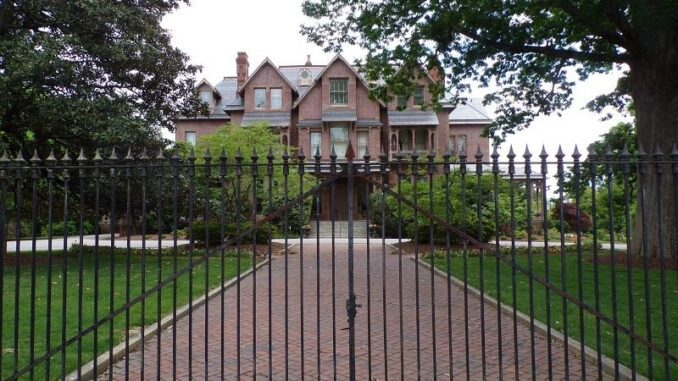
RALEIGH — The governor’s Executive Mansion in Raleigh may be called the “People’s House,” but the people aren’t getting any details about the over $2.1 million in repairs and refurbishments that have been made to the mansion since 2017.
In September of 2018, a records request for repairs for the Executive Mansion in Raleigh was sent to the N.C. Department of Administration (DOA). The department took 820 days, well over two years, to finally respond to the request.
The request asked for the most current renovation recommendations for the Executive Mansion and information on any work performed on/at the mansion since Jan. 1, 2017, as well as who or what entity paid for that work.
During that lengthy-time period, DOA’s Director of Communications Nan Sanseverino insisted the records were being reviewed by lawyers for redactions. Yet in an email to North State Journal dated Dec. 2, Sanseverino did not supply those redacted records or any information beyond the fact that over $2.1 million had been spent on mansion repairs since 2017.
“Since January 1, 2017, the State of North Carolina has spent $2,123,955 to perform repairs necessary for the safety, structural integrity and required maintenance of the building, which serves as a working office, full-time residence, and public gathering and historic learning space,” wrote Sanseverino in her email response.
She went on to add “Some areas of the residence were in such dire need of repair that people were not allowed to access them until the required life safety repairs were completed. No renovations beyond required repairs have been performed.”
Sanseverino claimed the “repair records and recommendations for the executive residence are not typically shared publicly due to concerns about security.”
“The records requested identify potential deficiencies in the 1800s-era building as well as specific materials used to make repairs, information that could be exploited to threaten the safety of the structure and its occupants,” Sanseverino wrote. “We take these security concerns very seriously as do all who are responsible for the safety of the Governor and his family who live at the Residence as well as public visitors.”
Sanseverino’s claims for refusing to produce a repairs list run contrary to the repair records reporting that unfolded under Gov. Roy Cooper’s predecessor, former Gov. Pat McCrory.
In 2013, multiple media outlets obtained a list of repairs for various buildings maintained by the state, including bathroom repairs and mold removal at the Executive Mansion that totaled $230,000.
As reported by WRAL at the time, a full and detailed list of all work done on the Executive Mansion over multiple administrations was provided by DOA spokesperson Chris Mears. Additionally, the email between the contractors engaged to possibly do the bathroom repairs at the mansion was also obtained.
The bathroom repairs under McCrory’s administration were met with heavy media scrutiny and were eventually scrapped. Only $143,000 for a steam valve repair and some exterior woodwork repairs were kept on the mansion repair list.
The first major repairs and renovation to living conditions in the mansion such as plumbing, heating and electrical work took place during the mid-1970s. By the late 1980s, a non-profit called the Executive Mansion Fund Inc. was set up to help preserve the building.
According to the Executive Mansion Fund’s most recent tax records for the fiscal year 2018, the fund was sitting on assets totaling $1,420,522. That year, the Fund spent $80,060 to “support the historic North Carolina Executive Mansion.” The previous fiscal year, the Fund only spent $11,392 on the mansion’s upkeep.
If the Executive Mansion Fund expenditures were part of the repair dollar figure supplied by DOA, the balance remaining is still $2,031,963.
Construction of the Executive Mansion began in 1883, making the building close to 137 years old. The first to occupy the mansion was North Carolina’s 46th Governor, Democrat Dan Fowle. He took office in January of 1891 and died in the mansion on April 7, 1891.
Located at 200 N. Blount Street, the Executive Mansion is an example of Queen Anne style Victorian architecture similar to surrounding buildings along the street, including offices of the Lt. Governor. The mansion was added to the National Register of Historic Places in 1970.


